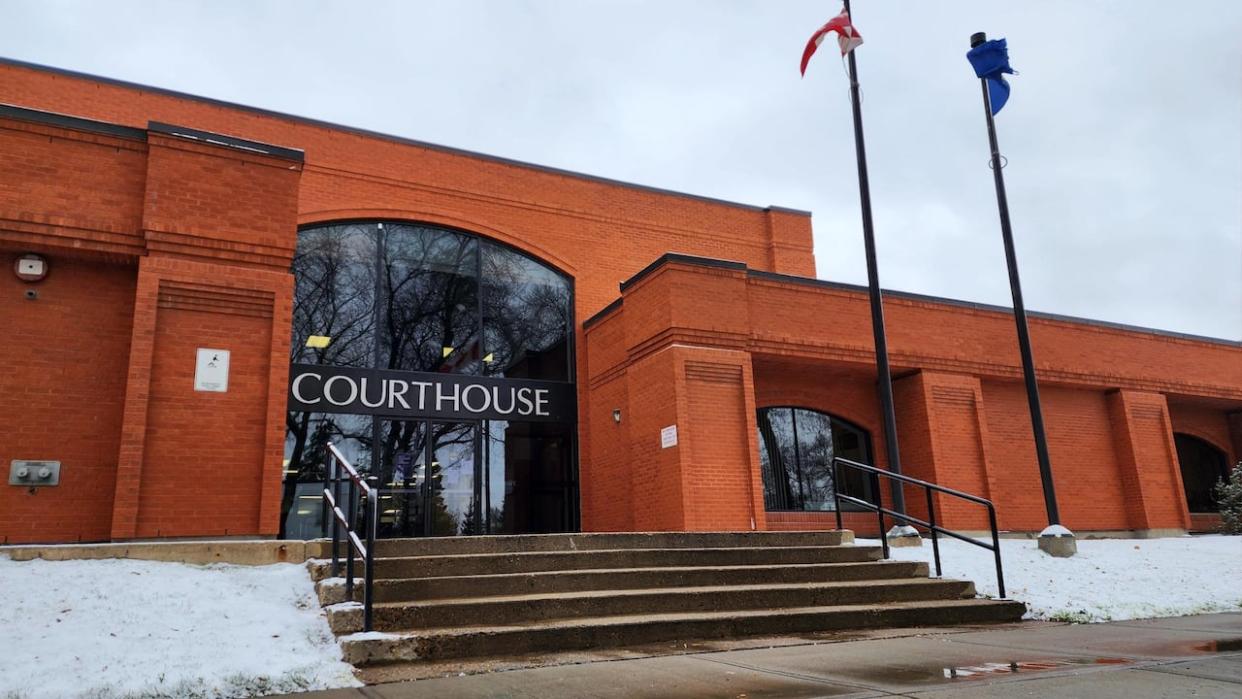3D-printed gun trafficking conviction a first of its kind in Alberta

An Alberta man has been sentenced to eight years for trafficking 3D-printed firearms in the first conviction of its kind in the province.
Dustin Lyslo, 29, pleaded guilty to five charges earlier this year, including weapons trafficking offences and careless use of a firearm.
Lyslo used a 3D printer to make plastic suppressors and receivers.
Suppressors are prohibited devices in Canada, while receivers — the basic part of a firearm to which all other components are attached — are a regulated component, meaning they cannot be legally purchased without a licence. Other parts used in building a gun can be freely bought on the market.
Firearms with 3D-printed receivers are often known as "ghost guns," as they do not have serial numbers and cannot be traced.
At least seven firearms
"[Lyslo] set out to learn how to manufacture guns using the 3D-printing process and was willing to sell them, introduce them out into the community," Justice William Andreassen said Monday during sentencing at the Camrose provincial court.
"This is more serious than trafficking traditionally produced firearms, which can be identified by serial numbers."
According to an agreed statement of facts, Lyslo was involved in the manufacturing and unlawful transfer of at least seven 3D-printed firearms between March and May 2021.
Two were known to be functional as they had been test-fired, including into a neighbourhood traffic sign in Camrose, Alta., a small city located about 100 kilometres southeast of Edmonton.
In texts and online messages, Lyslo discussed manufacturing of the firearms with over two dozen people. In 17 of these conversations, he discussed or offered to unlawfully transfer the firearms.
Court heard Monday that Lyslo trafficked the weapons to support a drug addiction.
In May 2021, the Camrose Police Service searched Lyslo's apartment and arrested him. They found a 3D printer, 3D-printed suppressors and handgun parts, along with about 10 grams of drugs.
Six months later in November 2021, RCMP and members of the National Weapons Enforcement Support Team unit searched a travel trailer in Killam, Alta., about 70 kilometres from Camrose. They found Lyslo along with a 3D printer and printed firearm parts, including the upper receiver of an AR-15 style rifle.
Lyslo expressed regret for his actions Monday, apologizing to his family in the gallery for letting them down.
Lifetime firearms ban
There have been previous convictions in Manitoba and Saskatchewan.
Crown and defence lawyers jointly recommended a sentence of eight years, which was accepted by the justice, with credit for time served in remand.
Lyslo will also be subject to a lifetime firearms ban.
"We appreciate the consideration by the court of this matter. The court has sent a message with this decision about the danger of 3D-printed firearms," Crown prosecutor Adam Garrett said in a statement.
Garrett expressed gratitude to the enforcement agencies that were involved, including RCMP and police forces in Camrose, Calgary and Edmonton.
Camrose investigation
With their relative ease of manufacture and widespread availability of online files and guides, 3D-printed ghost guns have become a growing concern for law enforcement agencies across Canada.
Mathew Wilton, a detective who was part of the Camrose police investigation into Lyslo, said the police service has been staying on top of the practice as it becomes more prevalent.
However, the Lyslo investigation was a first for the small Alberta city, he said. "We did learn a lot through this investigation, and worked with the partners around us to be able to learn that information."
He said the service spent a considerable time working in partnership with other agencies, including the Edmonton Police Service's firearms unit, to put together evidence.
The sentence impose by the court is significant, he added.
"The court case here today, I think helps demonstrate for offenders to be aware of what the results are and what will happen if they're engaged in this activity."


